Despite keeping the conditions of your plants ideal, you may find that some of them are flopping around instead of standing proud. You wonder what could possibly be going wrong. What could be the next step? As frightening as it may be, fear not, as this problem can be simply fixed by adding bamboo stakes, a trellis, or a moss pole! In this article, let’s talk about how to use moss pole for houseplants.
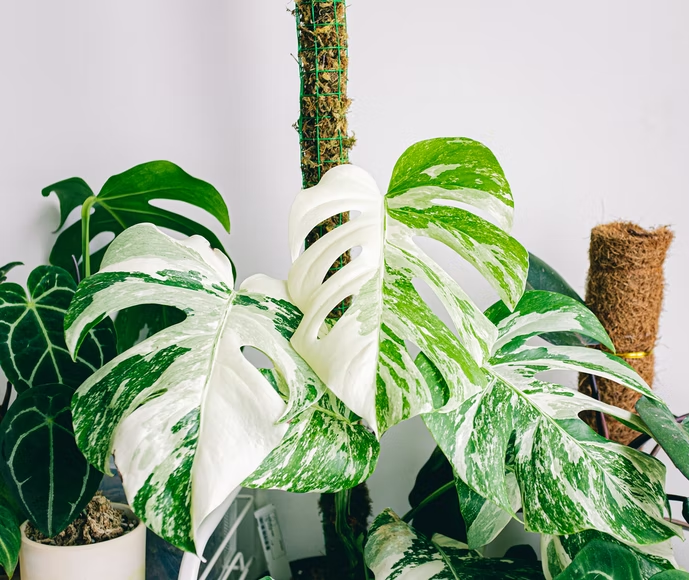
We humans also need someone to lean on from time to time; plants are no exception. So in this article, we’ll be talking about the Moss Pole and how to use them to make your plant grow healthier!
Moss Poles aid and encourage your vining plants to grow stronger and train their vegetation to grow better. They also provide additional nutrition and moisture to your plants, especially for those vining and climbing plants. For epiphytes and aroids, a contact between aerial roots and the moss pole can provoke the development of larger and more robust leaves.
Let’s delve deeper, shall we?
1. Why Should You Use A Moss Pole For Your Vining And Climbing House Plants?

If you want to guide your plant’s growth in a certain way, or if you just want your plants to grow better than they currently do, then you can use a Moss Pole as your supplementary implement. In almost all cases, Moss Poles encourage your indoor plants to have a healthy growth vertically. Many plant owners do this due to various reasons.
First, it gives you flexibility about where to place your plant. You are not being limited by horizontal space by giving your plant more vertical space to grow—the next point ties in with the first. Moss poles help in saving space. Plants in poles will take up less space, meaning you can put more plants!.
The use of a Moss Pole also allows you to “shape” your houseplants a certain way. As an example, when you’re trying to grow your Monstera, you actually can direct which way your plant grows using a Moss Pole. If you do not utilize a Moss Pole, your plant will surely grow whichever way it wants to. Using a plant pole guides it upwards.
2. Which Plants Benefit Most From A Moss Pole? Will All Plants Need A Moss Pole?
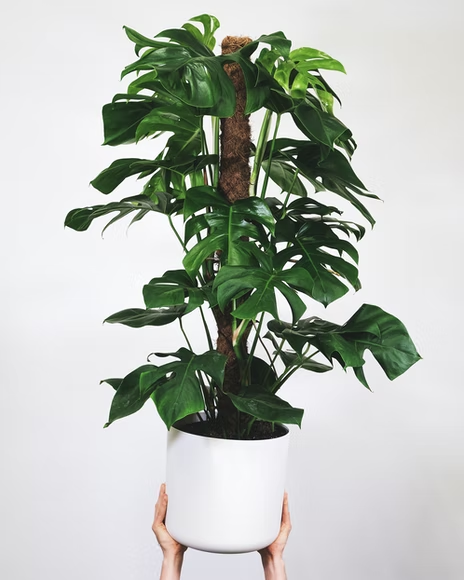
Now you may be convinced about getting a Moss Pole for your plant but hold your horses! Or rather your plants. Before we delve into the proper usage of a Moss Pole, let us first get into what kind of plants would really benefit from having one.
If you’re a veteran when it comes to plant care, then you may already have some idea. Plants that like to hang through vines, climbing plants, aroids, and epiphytes are the best choice of plants that can benefit greatly from moss poles. What the Moss Poles provide for these plants is essentially a medium by which they cling on to and support themselves.
Of course, there is nothing wrong with letting these plants grow naturally as they would without a Moss Pole. But, your plant babies may use your little help. In their natural habitats, these plants use other structures to prop themselves against tree barks, branches, shrubs, and other solid structures like rocks and boulders.
In an urban environment, some will climb chicken wires, fences, and even wood and concrete walls! These plants may rely on more sturdy structures to support their growth. When you place these structures, such as Moss Pole, you are also providing for their reliable and healthy growth.
This new environment will be what your plant needs as it will make them feel like they are growing in their natural habitat. In addition, you will be making them comfortable.
So, in summary, the best choice of plants that you can use a moss pole with are climbing, vining, epiphytes, and aroid plants. Some examples are Monstera, Pothos, and Philodendron.
3. How Are Moss Poles Used?
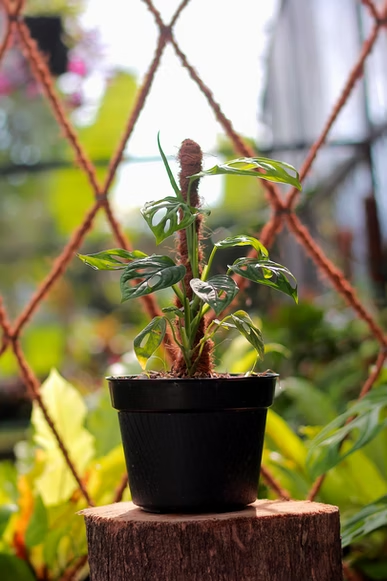
We are now going to see how to utilize a Moss Pole to support your plant. How you utilize this implementation will depend on your plant you plan on supporting. For example, if you use a pole to a variety of Philodendron with dainty and delicate vines, then you need to have some gentle but firm way of keeping its vines and roots on the pole.
On the other hand, if you use a pole to a variety of Monstera that has more supple and broad vines, then all you need is to keep the stems in close proximity to the pole as much as possible.
The list you need for setting up a Moss Pole is not extensive. You will need:
- A climbing plant
- A Moss Pole
- Velcro strips, gardening tubes, or thin twine
With these following items, you can start using a Moss Pole. Remember that the ultimate goal is to make sure that your plant contacts the pole. Velcro straps are one of the best ways to strap your houseplant to it. If you don’t find this as appealing, you can use garden tubes or thin twine.
If you are strapping a plant that has delicate vines like your Philodendrons, be careful not to tie it down too tight, as this will easily damage the vine.
Here is a more detailed step-by-step guide:
- First, figure out how tall you would need your Moss Pole to be. Ideally, your Moss Pole would be taller than your current plant’s tallest vine. This will give plenty of space for your plant to climb.
- At this point, you have hopefully purchased your first Moss Pole. Start soaking it in water until it is fully saturated. The additional moisture will help the plant brace against the pole.
- Insert the wooden end of your Moss Pole into your plant’s soil. Position it so that the Pole is as close to the center of the pot and as close to the plant’s base. In this step, be painstakingly careful not to stab right through the main root system of your plant.
- When your Moss Pole is as stable as it can get, start wrapping your plant’s vines around the pole with your chosen binding implement and work your way up and around it. Pay attention to the plant’s nodes, as this is where adventitious roots are most likely to form. Try to make sure that each node has good contact with the Moss Pole.
As your houseplant keeps on growing, you will have to continue to strap those new growths to its Moss Pole. This way, you are teaching your plant to grow upwards instead of outwards. Or, you can also choose not to bind some new growth. This way, you are “sculpting” the growth of your plant.
As time passes, your plant will teach itself to attach to the Moss Pole even without you having to bind it, especially if aerial roots start to grow.
The Pothos and Philodendrons will start growing these aerial roots and anchoring themselves to the Moss Pole you placed. They quickly learn that they are growing near the structure you set and will adapt themselves accordingly.
The Monstera will grow a bit more slowly; hence there is a need to teach this plant for longer. Nevertheless, they will also start to learn to grow vertically. Once it starts wrapping the moss pole, you wouldn’t need to work on it as much anymore.
If you want to make your own DIY moss pole, you can use either sphagnum peat moss, sheet moss, or coco fiber sheet. For the stake, a PVC pipe, bamboo, or a wooden dowel can be used. There are no golden rules when making your own moss poles. You can use whatever is available to you.
RELATED: Moss In Lawn? Is It Harmful, And How To Get Rid Of It For Good?
4. I’ve Already Set It Up! How Do I Maintain My Moss Pole Along With My Plant Of Choice?
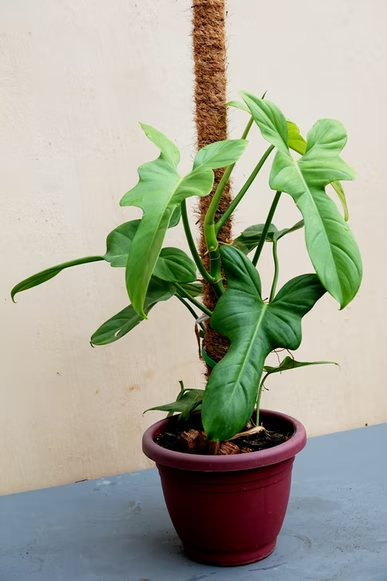
Maintaining a Moss Pole is like maintaining any other plant. As you may have already known, Mosses are also plants and will also need some maintenance. You can spritz or mist your pole often or pour water down from the pole to ensure the health of your Moss Pole. This will also help the adventitious roots of your plant to receive more water.
Aroids will also appreciate the extra humidity!
As your plant grows along and around the pole, you can slowly start removing any velcro, ties, or twines you have placed. As also mentioned earlier, you need to support the new growth of your plant by bracing them against the Moss Pole.
When your plant outgrows the length of your Moss Pole (and trust me, they will!), you can purchase a new and taller Moss Pole. Then, you can repeat the process of binding the plant to your new Moss Pole.
When your plant has outgrown its pot, repot it in an appropriately sized pot along with the Moss Pole it has grown in. Be very careful in removing a Moss Pole from your plant. Damage to the plant’s aerial roots can cause issues with your plant’s health.
5. It Seems Like Maintaining A Moss Pole Is Too Much Work. Are There Any Alternatives To Moss Poles?
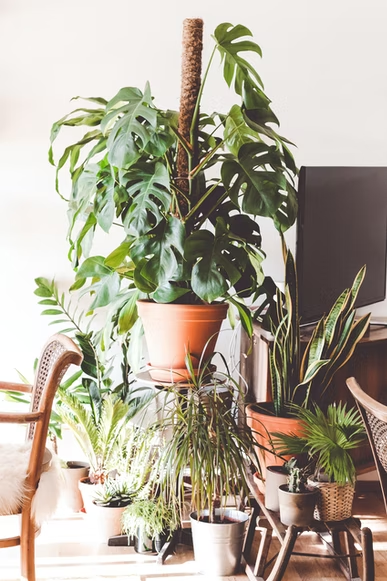
There are plenty of other Moss Pole alternatives to support your plant’s growth. For example, a creative way of training your plant to climb is to put some command hooks, pins, or nails on a wall or fence so that they attach to them. A large piece of plywood can also help a plant stay upright, even if your plant isn’t a vine or a hanging plant.
For thinner and lighter vines such as Hoyas, a bamboo stake or a homemade trellis will work amazingly well. These plants have vines that creep and naturally wrap around any supporting structures they can get on. For smaller plants such as Anthuriums that need some training to stay uptight, a metal rod can help support its growth.
Finally, you can reuse any materials you can find in your garden sheds, such as unused chicken wires, nets, plywoods, and thin sheets of plastic and metal. Whatever your plants can use for support, they will do so.
6. Should A Moss Pole Be Kept Moist?
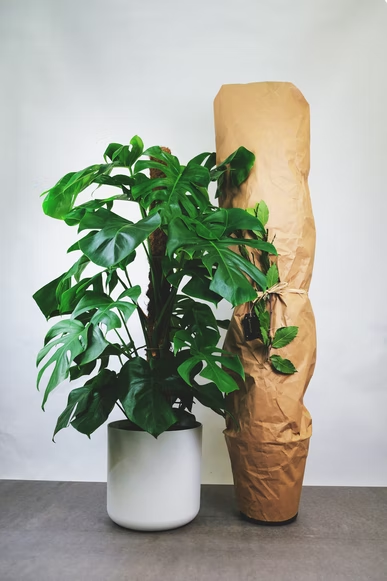
Your vines are mostly tropical plants. Hence they thrive best in a moist, humid environment. It is always good for your plants to fully replicate the conditions of their natural habitat to fully support their growth and development. If you get confused with your plant’s ideal environmental conditions, just remember where they come from and try to simulate it.
Moist sphagnum moss pole allows for better root attachment, making your plant healthier and more attractive. Because moss poles are absorptive, keeping your moss pole moist also makes it a good alternative source of water. However, moss poles should not be soaking wet like your soil to avoid waterlogging and root rot.
Moss poles serve as a replication of the large trees that your plants cling to in the wild. In the tropical forests, these trees can be moist due to the high moisture level inside the forest.
7. Can I Reuse Old Sphagnum Moss?
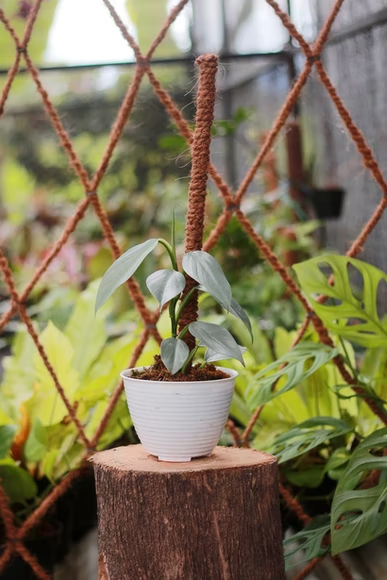
One of the best parts of home gardening is that you can use and reuse materials that are just junked in your garage for a much better purpose. Recycling not only lessens our ecological waste but also saves our pockets. Of course, the same can be said and done with some gardening materials, but with some precautions.
If you want to reuse your sphagnum moss to make your own moss pole, you have to make sure that it has not been decomposing into small pieces. You should also make sure that the moss is not slimy with algae or molds. Most importantly, your sphagnum moss should not be in contact with plants that have bacterial or fungal infections.
RELATED: How To Get Rid Of Moss In Your Lawn Naturally | Expert Tips & Tricks
8. How Long Does A Moss Pole Last?
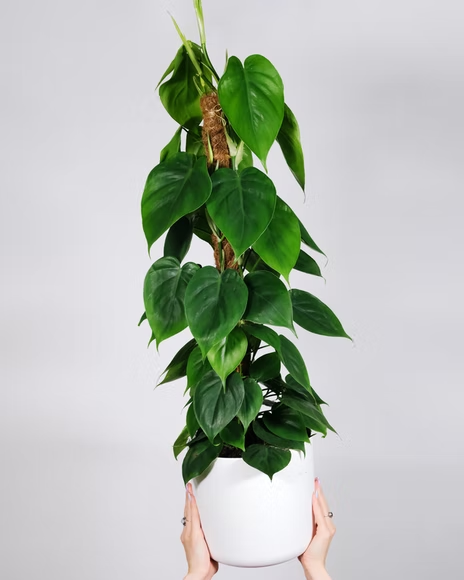
There is nothing that we want but durable and long-lasting equipment and materials that will save us money and the occasional trip to the hardware. In terms of your gardening materials, a lot gets used up easily, like fertilizers, insecticides, and horticultural oils. However, some materials could last for years.
One good example is your moss pole. Depending on how it is made, a moss pole can last you for four to six years. This is because moss poles are often made with durable materials, such as polyethylene plastics, wires, and others that do not degrade easily, even in harsh environmental conditions.
Conclusion
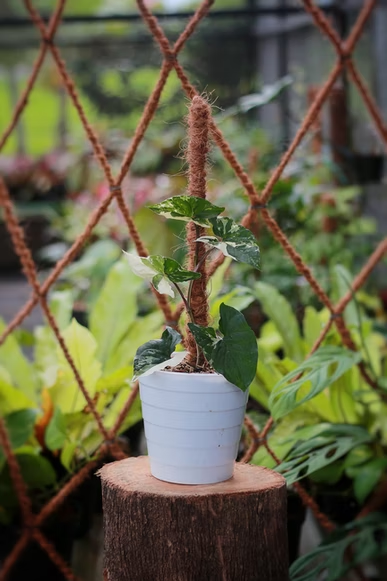
Whatever the reason for wanting to train your plant to keep upright and grow vertically, the Moss Pole is a great tool to add to your arsenal of plant care. In addition, it will give you the creative headspace (literally and figuratively) to frame and build your home garden the way you want to.
Not only this, but it also provides a healthy living environment for your houseplants. Once you get a climbing plant variety such as the Monstera, Philodendron, or Pothos, all you need is one Moss Pole and some way to brace your plant against the Pole, and you’re all set!
You might be intimidated by using a moss pole, but once you get the hang of it, you will find yourself enjoying it, and some may even remark on how much of a pro you are at taking good care of your plants.
Editor’s Recommendations
Why Is My Fiddle Leaf Fig Limp? How To Save Your Droopy Plant
How To Propagate Christmas Cactus: What You Need To Know
Yellow, Not Mellow: 5 Reasons Why Your ZZ Plant Is Changing Color







